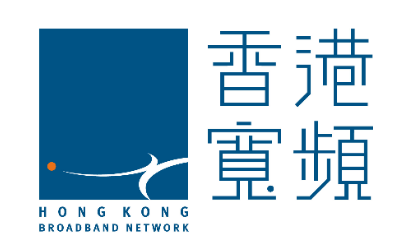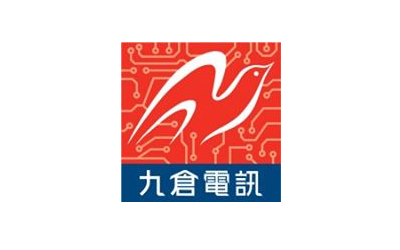Chapter 4: Incoming Call
Inbound Routes
When a call is incoming from outside, you want to forward this call to an extension, ring group or IVR. This Chapter will introduce you how to deal with the inbound calls.
Click Inbound Control -> Inbound Routes

General
Distinctive Ring Tone: mapping the custom ring tone file, e.g. set distinctive ring tone as “External”, the phone will play this ring tone when receiving the call.
Note: The phone must support such feature as well.
When incoming calls come from PSTN (FXO/GSM, PRI, VoIP), the calls can be accessed to Extension User, Call Queue, Conference, IVR, etc. You can choose freely based on your condition.
Port DIDs
If user wants to make the incoming call from the outbound line (FXO/GSM trunk) access to the specified extension user, Ring Group, call queue, conference or IVR, please configure it here:
Click Port DIDs-> New Port DIDs:

| Item | Explanation |
| Port | Select the port for outbound line. |
| Label | Set a label for this port. When incoming calls are from this port, the label will bedisplayed. |
| Destination | Incoming calls will access directly to this destination (extension user, Ring Group,call queue, conference, or IVR). |
Number DIDs
If you want to select the destination of inbound calls on PRI/BRI or VoIP Trunks based on the incoming DNIS (dialed number or DID). You can specify the DID and destination (user extension, queue, conference bridge, or IVR:
Click Number DID -> New Number DID

| Item | Explanation |
| DID Number | DID number calling into VoIP (This number is configured in the advance option ofVoIP trunk). |
| Destination | Choose a specified extension, call queue, conference or IVR to be directed to call. |
DOD Settings
If user wants to make the outbound call directly to the specified extension user, Ring Group, call queue, conference, IVR, please configure it here.
Click DOD Settings -> New DOD
| Item | Explanation |
| DOD Number | Set the DOD number, and use it to match the Caller ID.
If matched, the call will access to the defined destination. |
| Destination | Outbound calls will access directly to this destination (extension user, Ring Group,call queue, conference, or IVR). |
Ring Groups
Ring Group is defines a group number that rings a group of phones simultaneously, stopping when any one of them is picked up. If ring time exceeds a defined time, the call will be directed to IVR orothers based on your configuration.
Click Inbound Control -> Ring Groups -> New Ring Group

| Item | Explanation |
| Name | Define a name for the Ring Group. |
| Strategy | Select “Ring All” or “Ring in order”. |
| Ring Group Members | Select the Ring Group Member from “the Available Channels”, click to add. |
| If not answered | You can choose to forward the call to extension, voicemail, ring group, IVR or hang up if not answered. |
IVR (Interactive Voice Response)
IVR allows customers to interact with IPPBX via a telephone keypad, after which they can service their own inquiries by following the IVR dialogue. IVR systems can respond with prerecorded or dynamically generated audio to further direct users on how to proceed.
Please configure on this page Inbound Control -> IVR

Click New IVR to create a new IVR:

| Item | Explanation |
| Name | Set a name for the IVR |
| Extension | If you want to listen to the IVR by dialing number, input an extension Number you want. |
| Please Select | Select IVR audio file, please configure in this page:Inbound Control -> IVR Prompts |
| Repeat Loops | Loop times to repeat playing the IVR prompt. |
| Dial Other Extensions | Allow caller to dial other extensions besides the ones listed below. |
| Key Press Events | Each digit will be related to the actions defined in the blank. |
IVR Prompts
Record / upload or listen IVR sound from extension. Please configure on this page:

To record IVR Prompt by phone click New Voice

| Item | Explanation |
| File Name | Define a name for this voice file. |
| Format | Select the voice format, GSM / WAV (16bit) supported only. |
| Extension used forrecording: | Select the extension which is used for recording the IVR prompt. ClickRecord, the extension will ring, and then you can pick up the phone andrecord. |
You want to hear the prompt, please click Play

Select the extension, click Play, the selected extension will ring, and you will hear the recorded prompt after picking up the phone
Upload IVR prompt

NOTE:
- Uploading customized audio file must be wav(16bit/8000Hz/Mono), gsm, ulaw or alaw.
- The size is limited in 15MB!
Blacklist
If some numbers need to be blocked, you can use this functionality
Click Inbound Control -> Blacklist -> New Blacklist

Input the caller ID in the blank and click Save. Next time calls from this caller ID will be blocked.
Do Not Disturb
Do Not Disturb (DND) function prevents incoming call on an extension for which DND is activated.
Click Inbound Control -> Do Not Disturb

Time Based Rules
When an inbound call is processed, if the current time of the PBX is within these parameters, then the “if time matches” destination will be used for the call. If the current time of the PBX is outside these parameters, then the “if time does not match” destination will be used for the call.
Please set from this page: Time based Rule -> New Time Rule

New Time Rule:
| Item | Explanation |
| Rule Name | Define the name for this Time Rule. |
| Time & Date Conditions | Set time segment for Day/ Date/ Month. |
| Destination | How to deal with the inbound call in different time segments. For example,inbound call can be directed to operator in working time. |
Call Queues
Call Queuing is a queuing system that allows you to accept more calls into your telephone system than you have extension’s agent capable of answering them.
Create Agent
To allow a user to be considered an agent in a Call Center queue, please check the “Agent” option for that specific user extension.
Check Agent and Save

Call Queues Configuration
Total have 3 Call Queue you can use in this system.
Click Inbound Control -> Call Queues

| Item | Explanation |
| Queue Number | Define an extension number for the queue. |
| Label | Define the label for the queue. |
| Ring Strategy | RingAll — Ring all available agents until one answers (default)RoundRobin — Every available agent will take turns to ring.
LeastRecent — Agent with the least calls rings FewestCalls — Agent with the fewest completed calls rings. Random — Agent ringsrandomly. RRmemory — RoundRobin with Memory, and remember where it’s left off in the lastring. |
| Agent | Every extension defined as Agent will be listed here. Selected agent will be amember of the current Queue. |

| Item | Explanation |
| Agent TimeOut (sec) | The next Agent will ring after this time. |
| Auto Pause | Pause the Agent when it fails to answer the first call. |
| Wrap-Up-Time (sec) | Wrap-up time between the first answer and second answer. (Default is 0, whichmeans no wrap-up time.) |
| Max Wait Time (sec) | Maximum wait time for callers in the queue. |
| Max Callers | Maximum number of callers who are allowed to wait in the queue.
(Default is 0, which means no limitation.) |
| Join Empty | Allow callers to enter the Queue when no Agents are available. If this option isnot defined, callers will not be able to enter Queues with no available agents. |
| Leave When Empty | All callers in the Queue will be moved out when new caller cannot enter theQueue. This option cannot be used with Join Empty simultaneously. |
| Auto Fill | Callers will be distributed to Agent automatically. |
| Report Hold Time | Report the hold time of the next caller for Agent when the Agent is answering the call. |
| Frequency(sec) | Repeat frequency to announce the hold time for callers in the Queue.(“0” means no announcement). |
| Announce Hold Time | Announce the hold time. Announce (yes), not announce (no) or announce once (once), I will not be announced when the hold time is less than 1 minute. |
| Repeat Frequency(sec) | Interval time to play the voice menu for callers. (“0” mean not to play). |
| Announcement Prompt | Select a prompt as the Announcements Prompt from the IVR Prompts. |
Installation Guide
- DB20C
- School IP Phone system
- SIP Call Logger
- Softphone
- Chapter 1: Hardware Setup
- Chapter 2: Connect to the Network & Access IPPBX
- Chapter 3: Basic Configuration & Outgoing Call
- Chapter 4: Incoming Call
- Chapter 5: System Feature
- Chapter 6: Extension User Web Portal
- Chapter 7: Feature Code
- Chapter 8: Fax
- Chapter 9: Call Recording
- Chapter 10: Networking
- Chapter 11: Security
- Chapter 12: System Settings
- Chapter 13: Reporting
Sip Trunk Configuration Guide
SIP TRUNK Provider (Tested)




